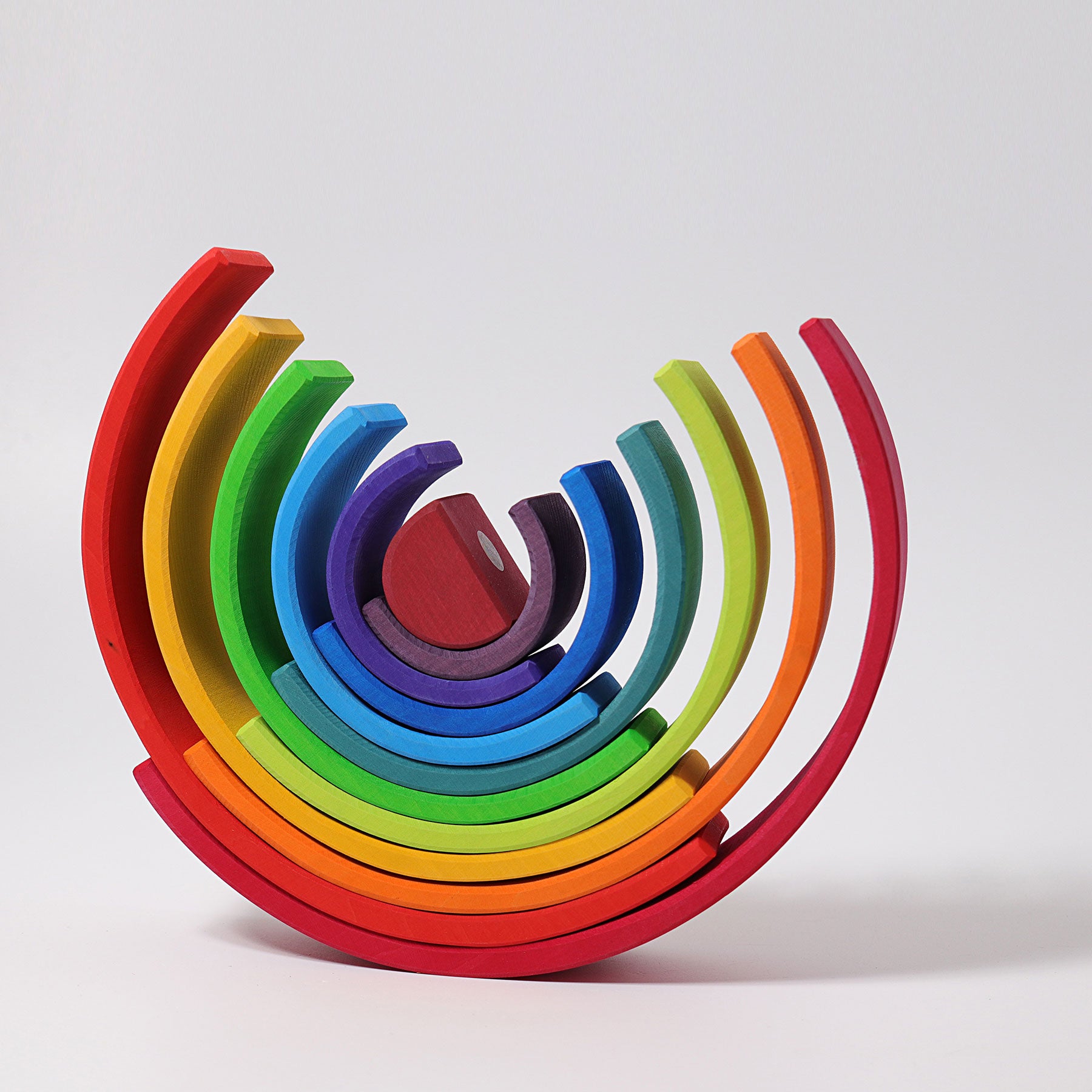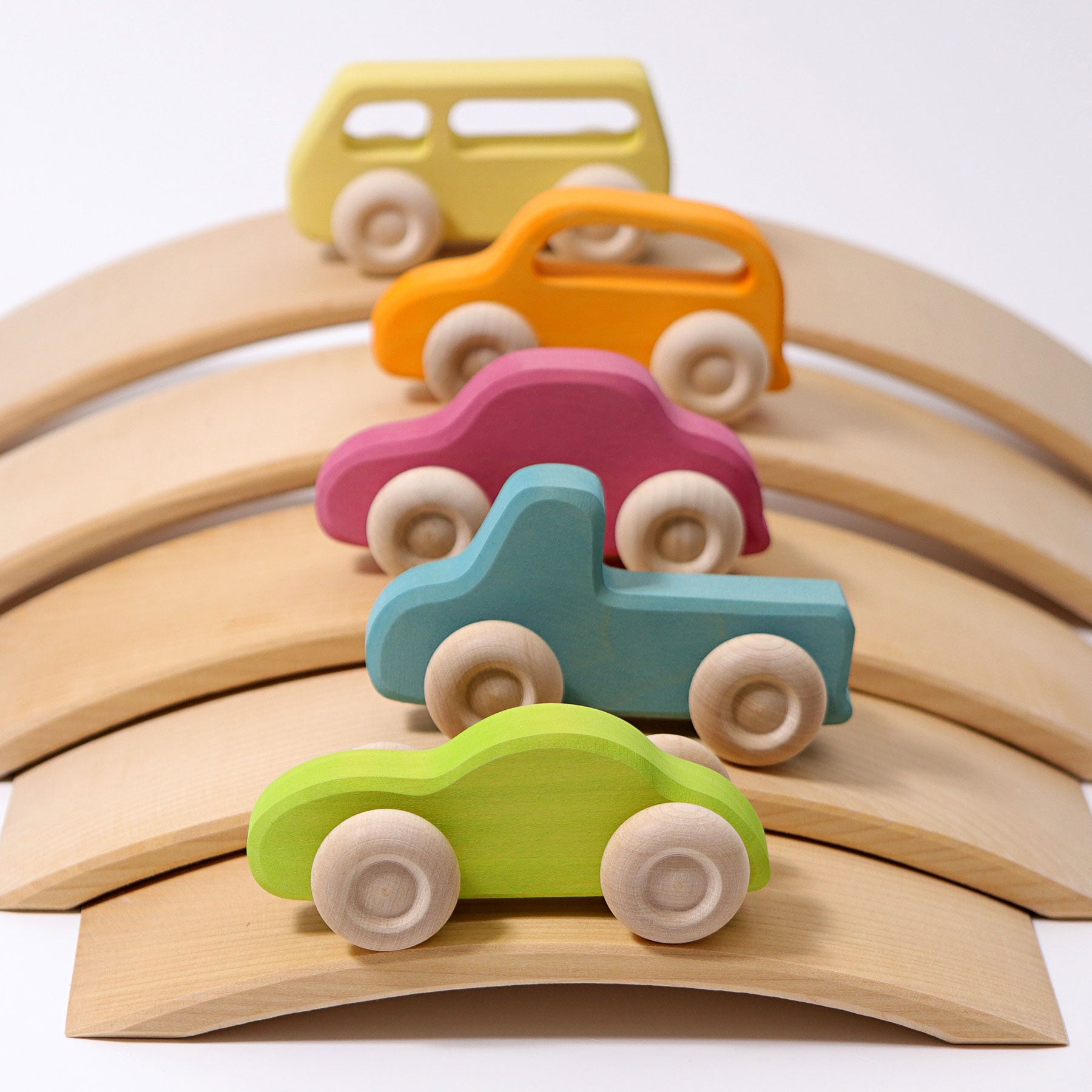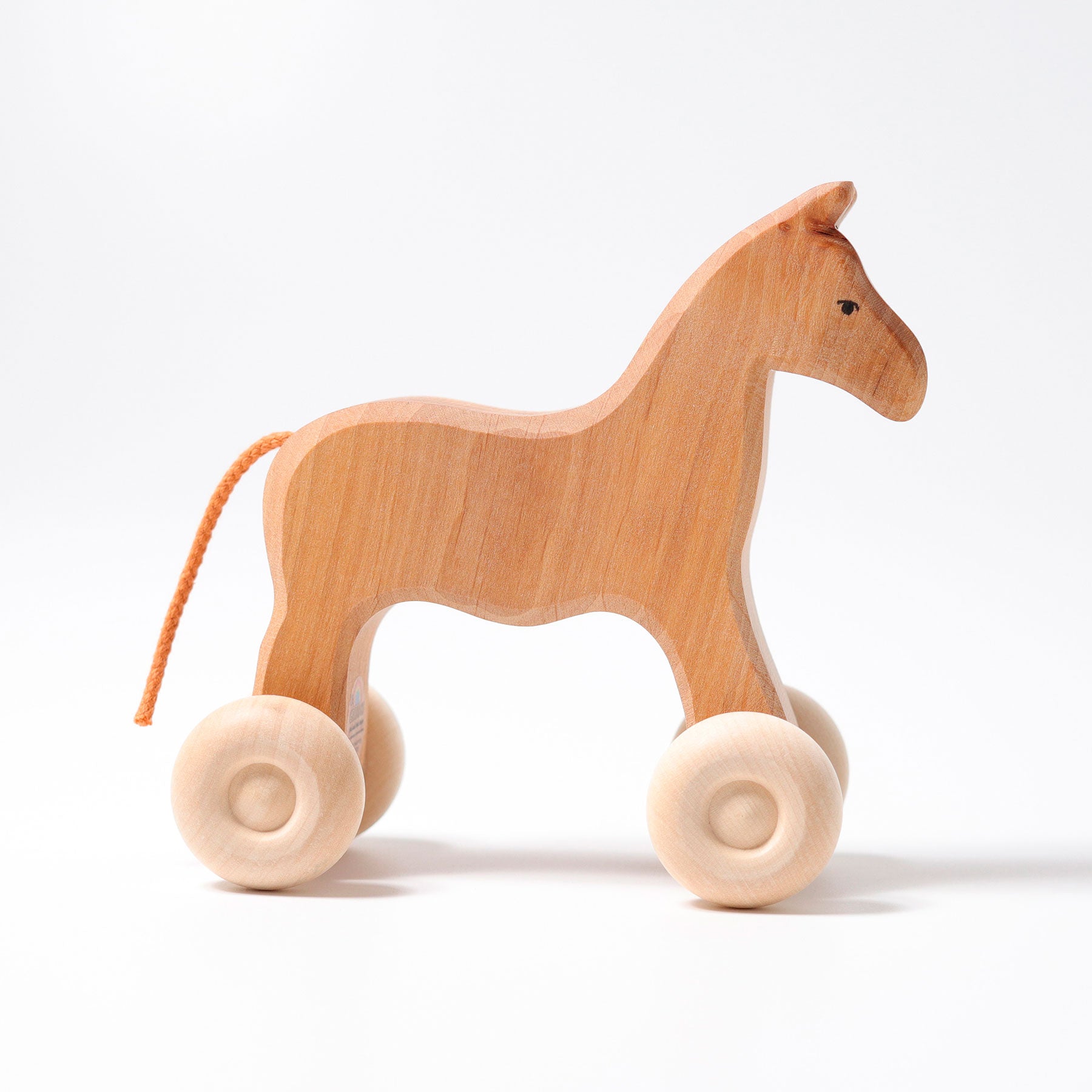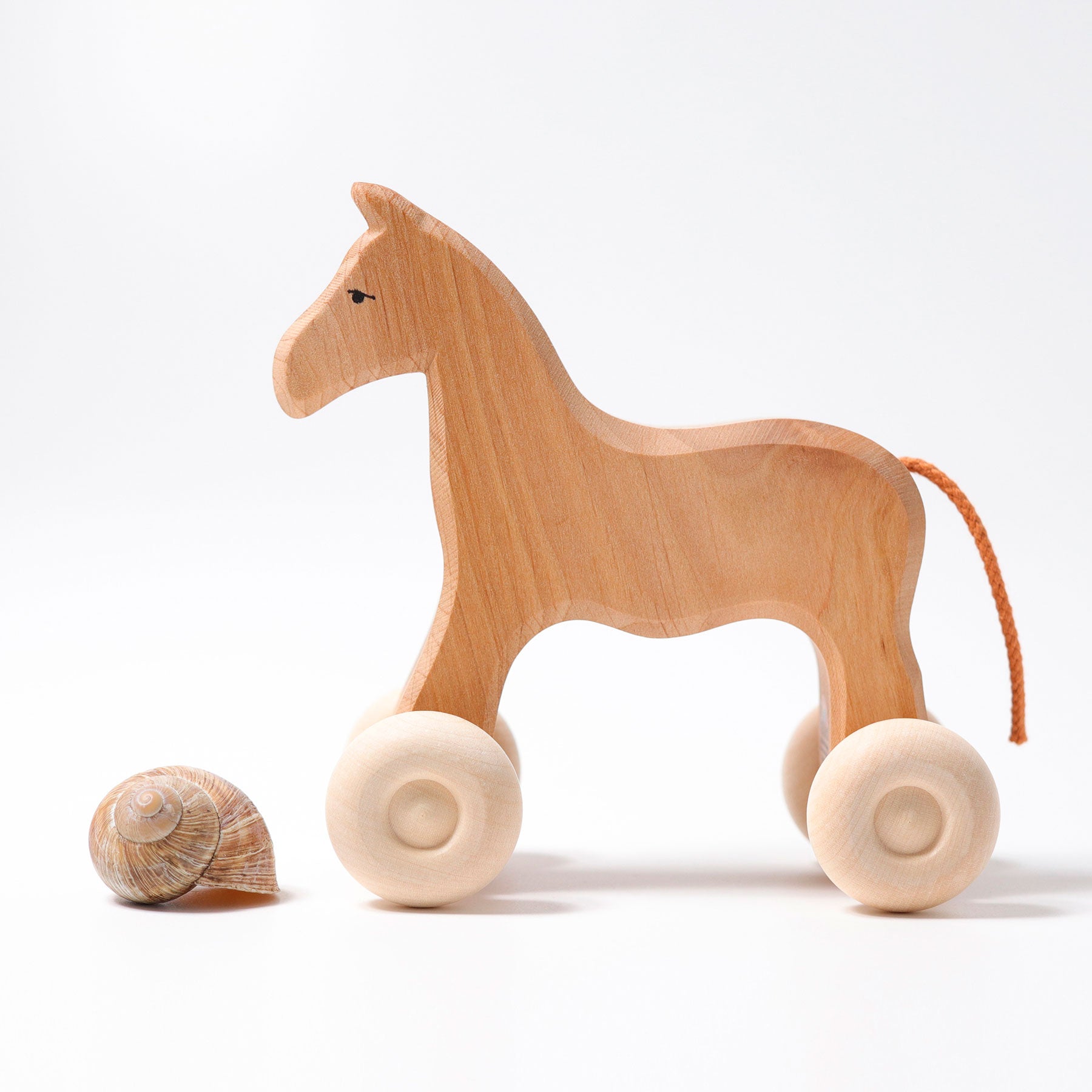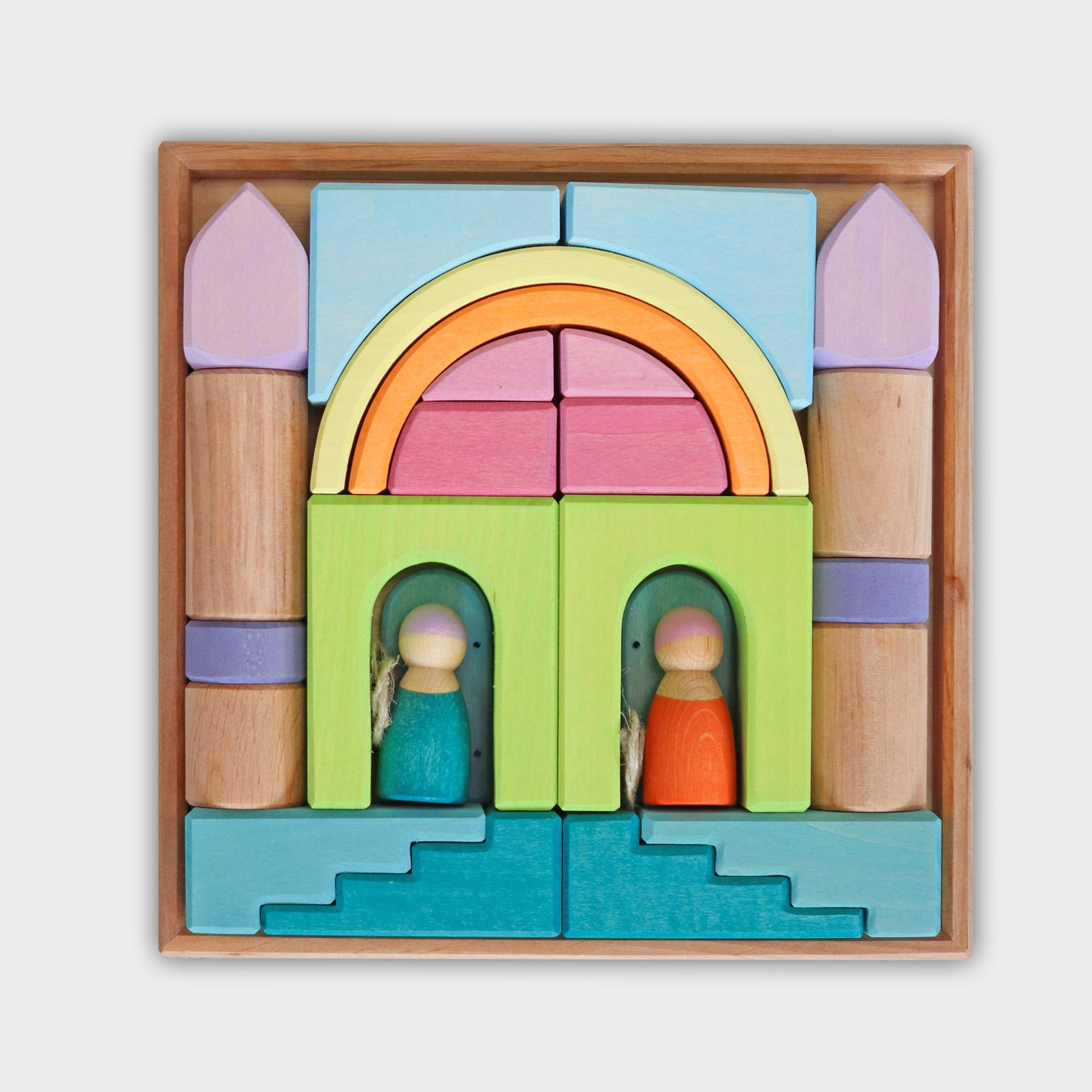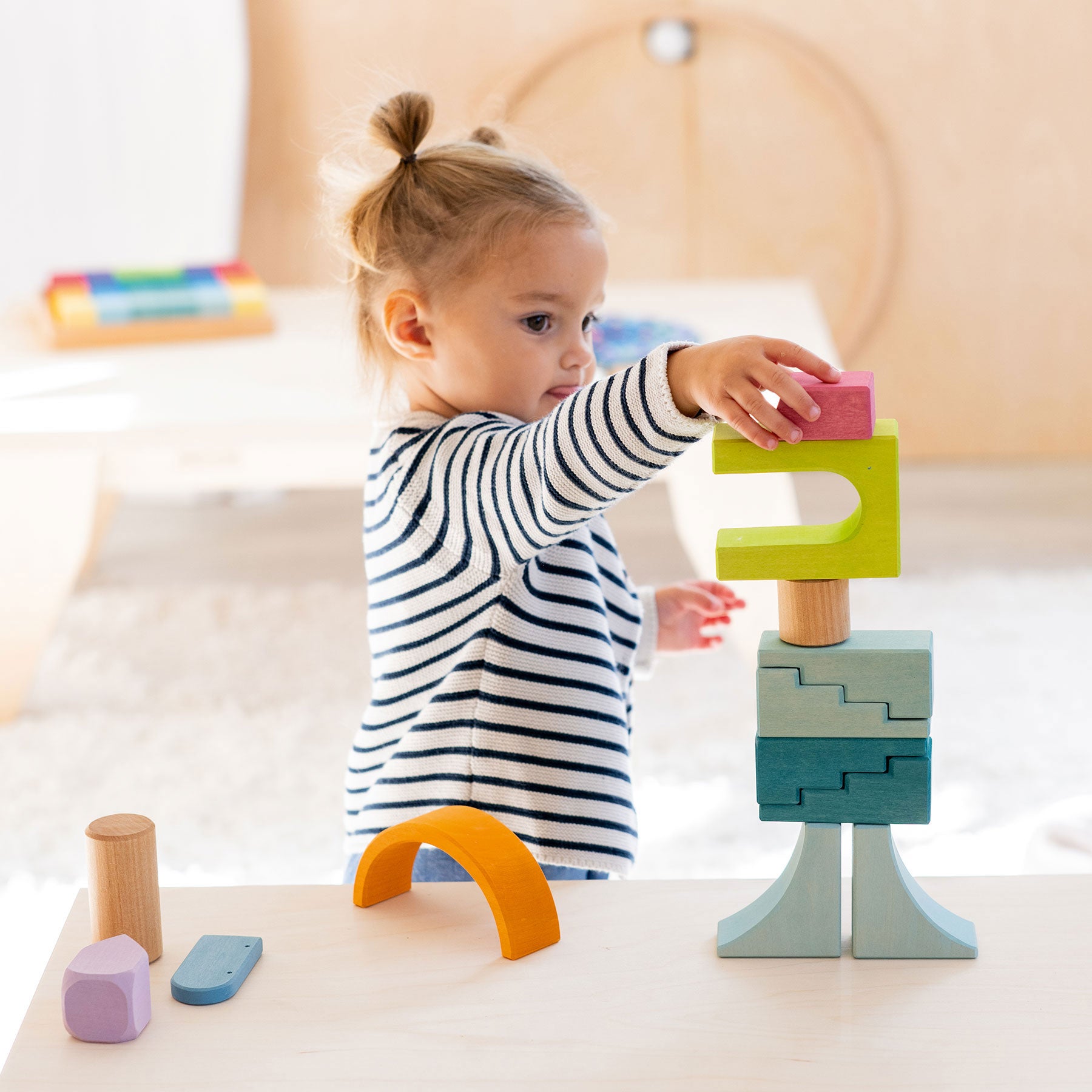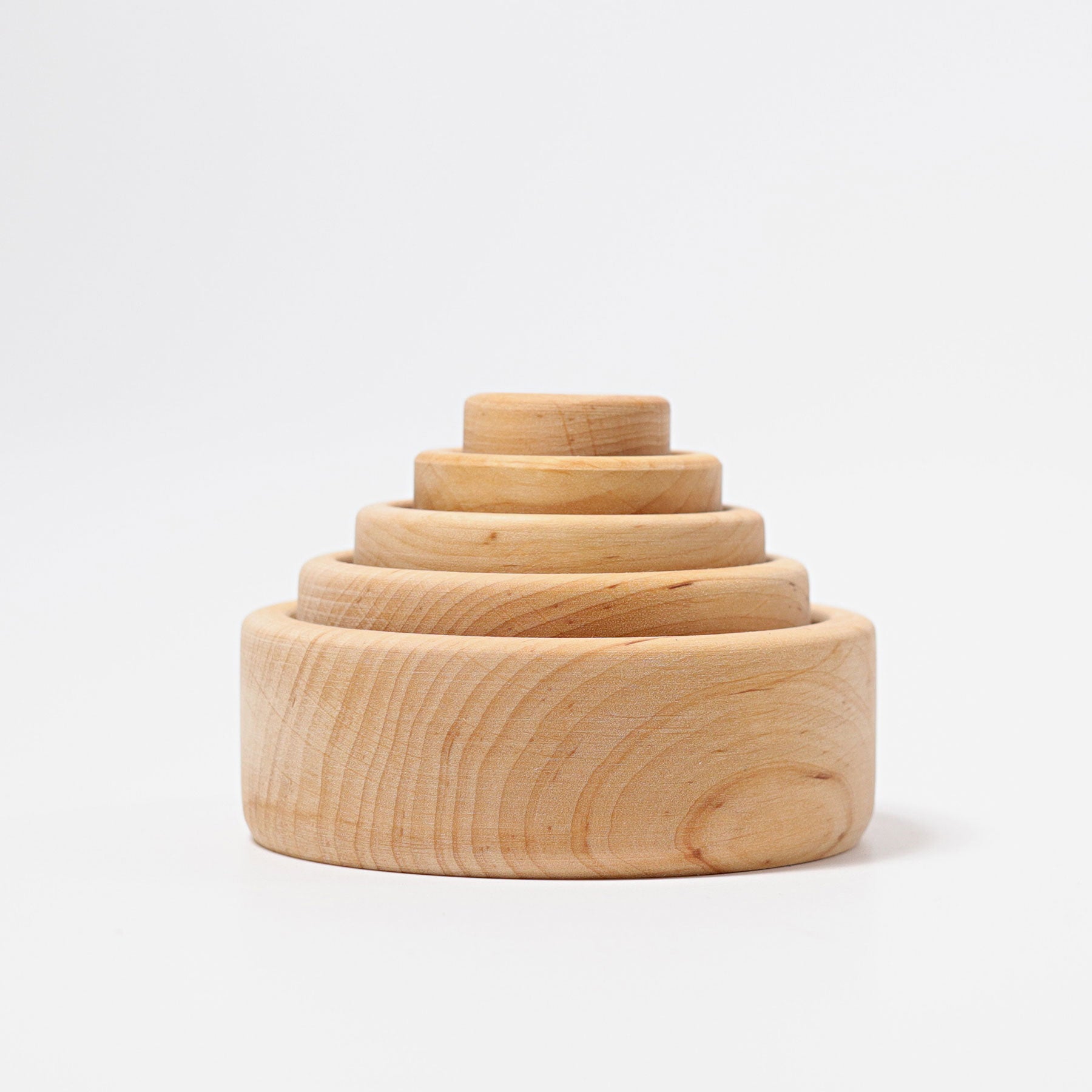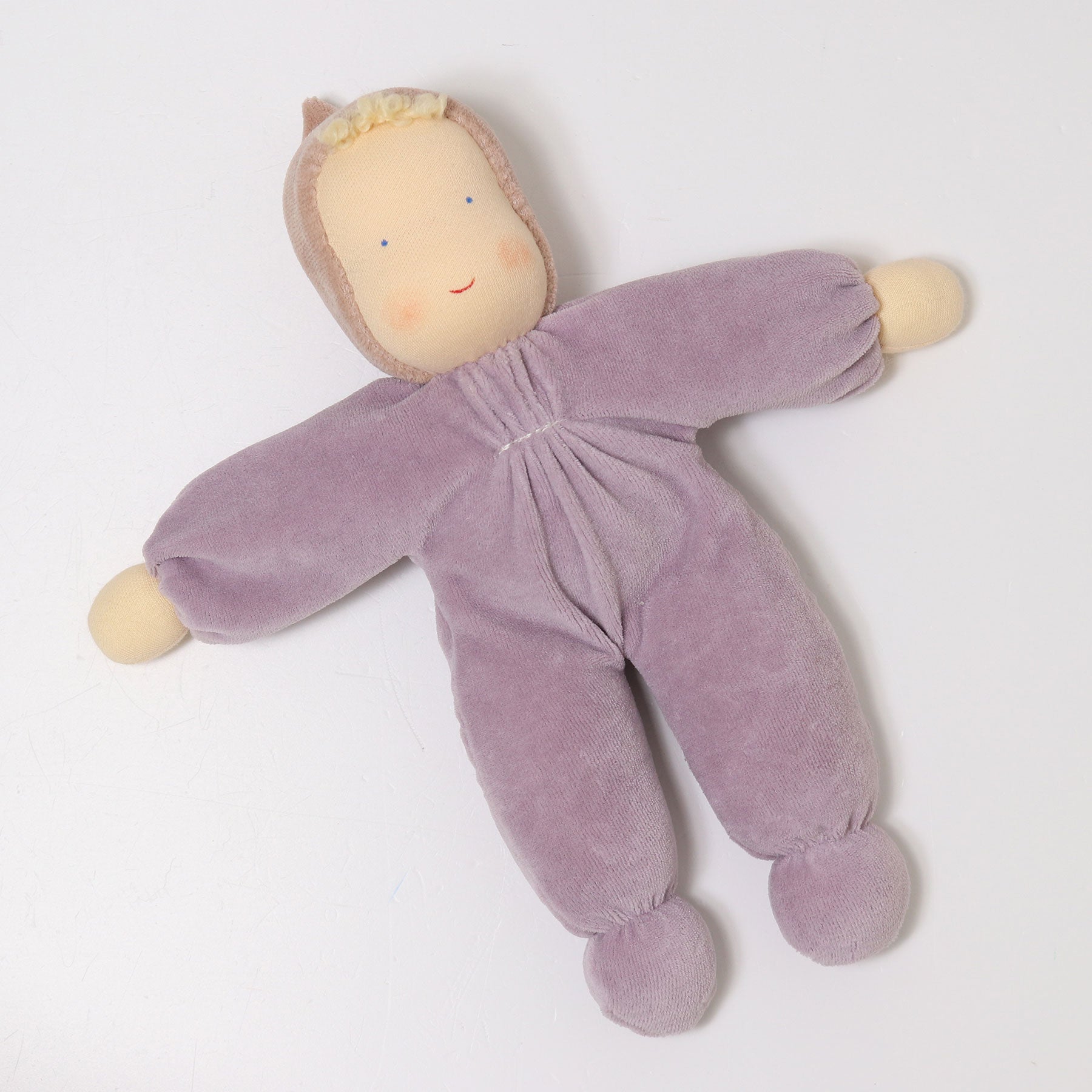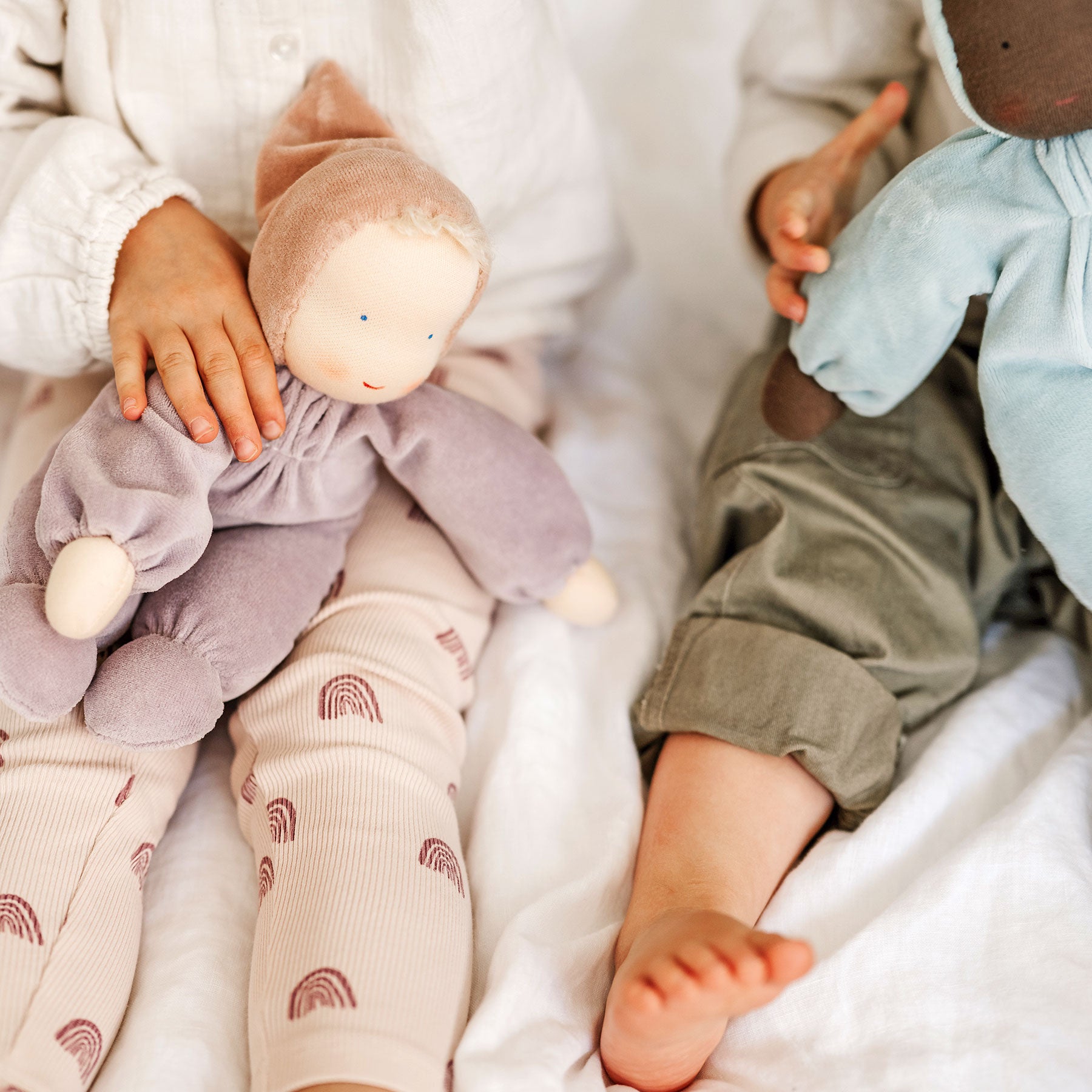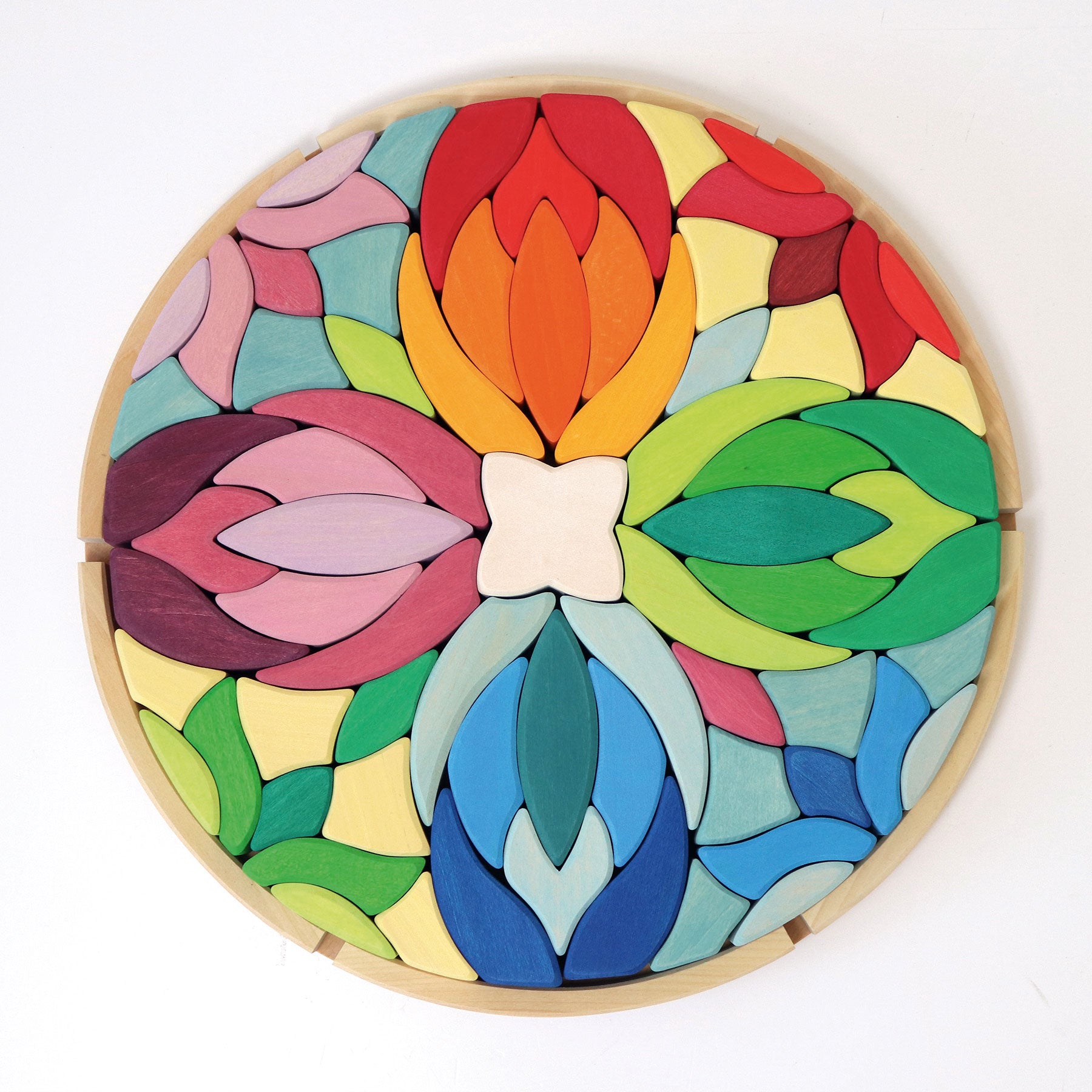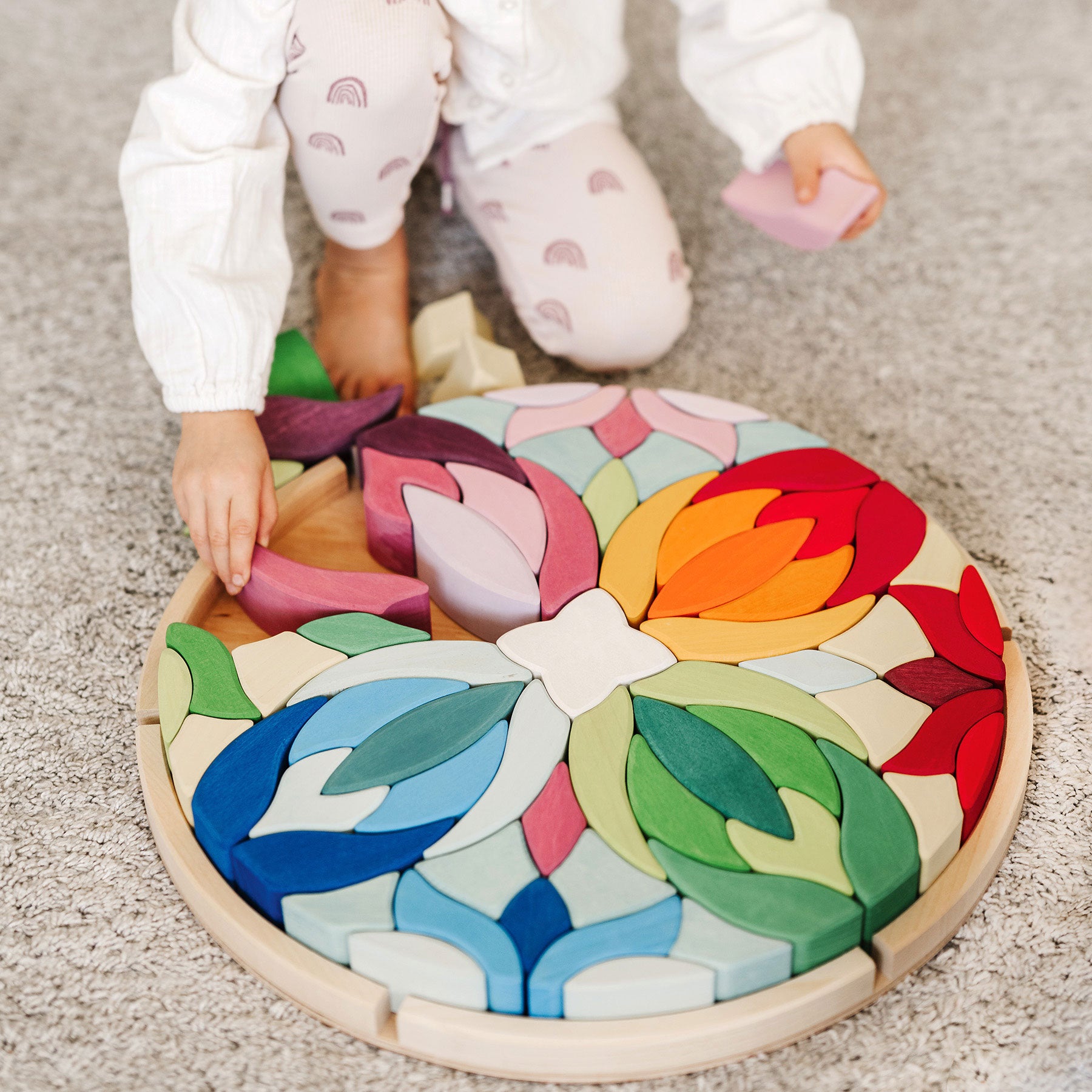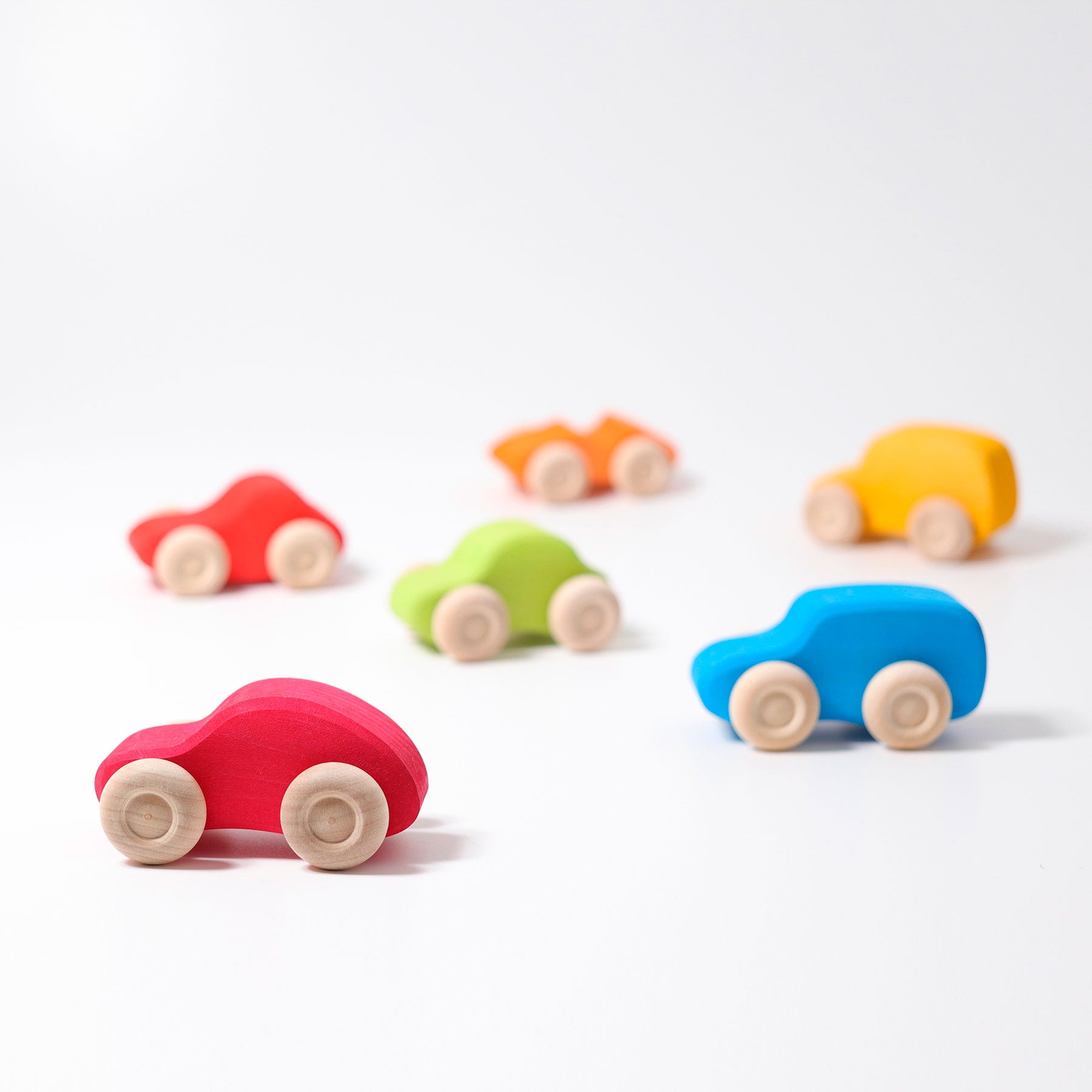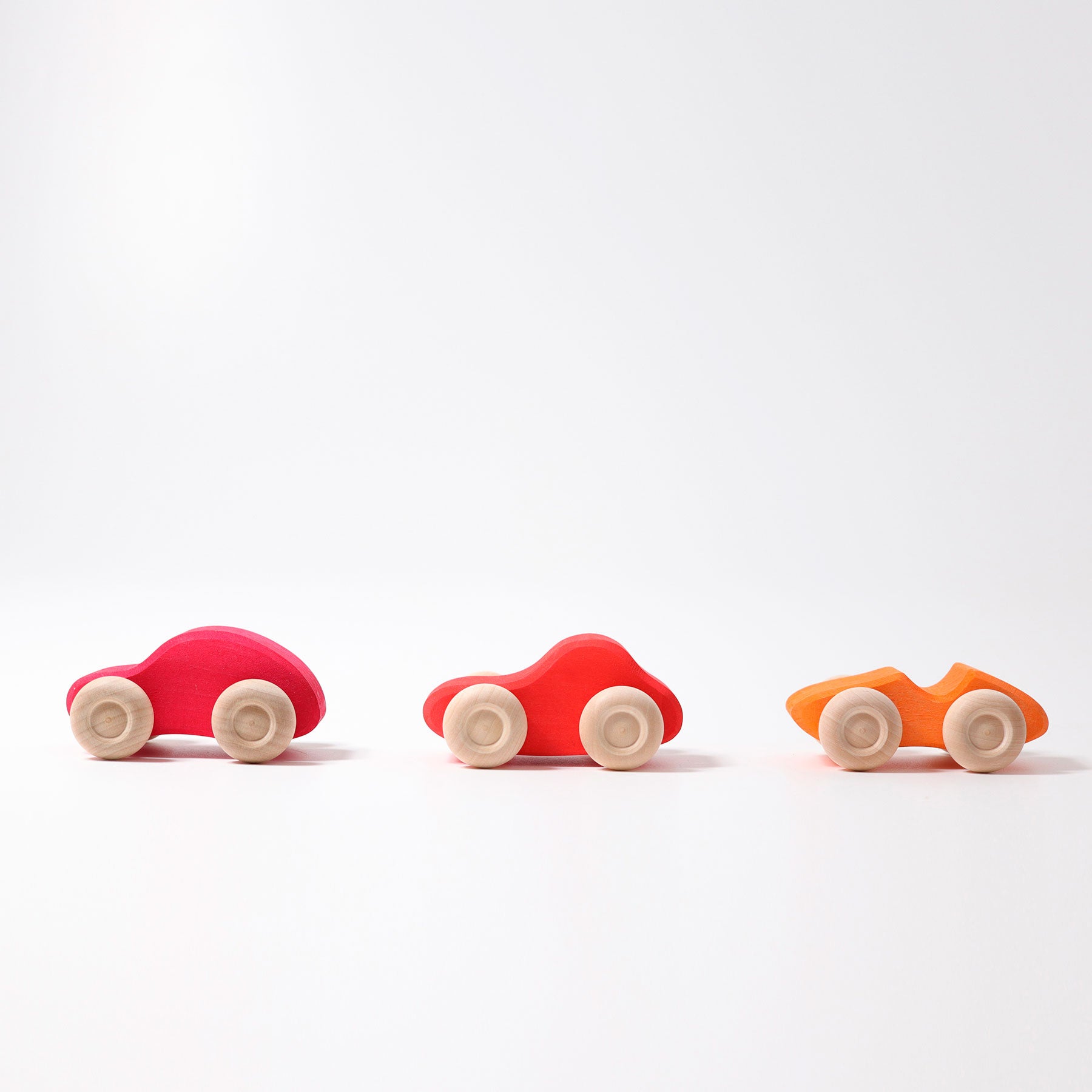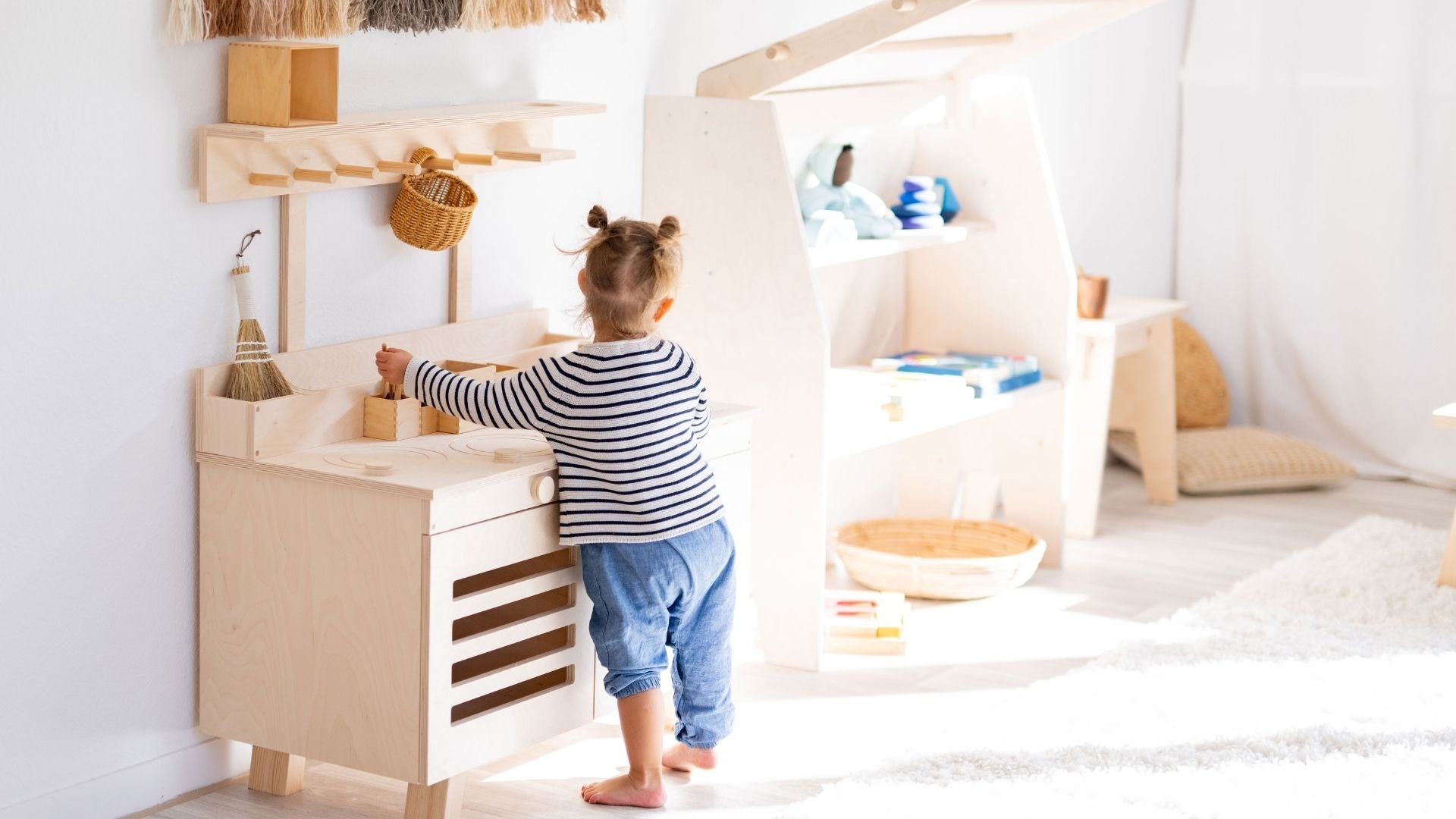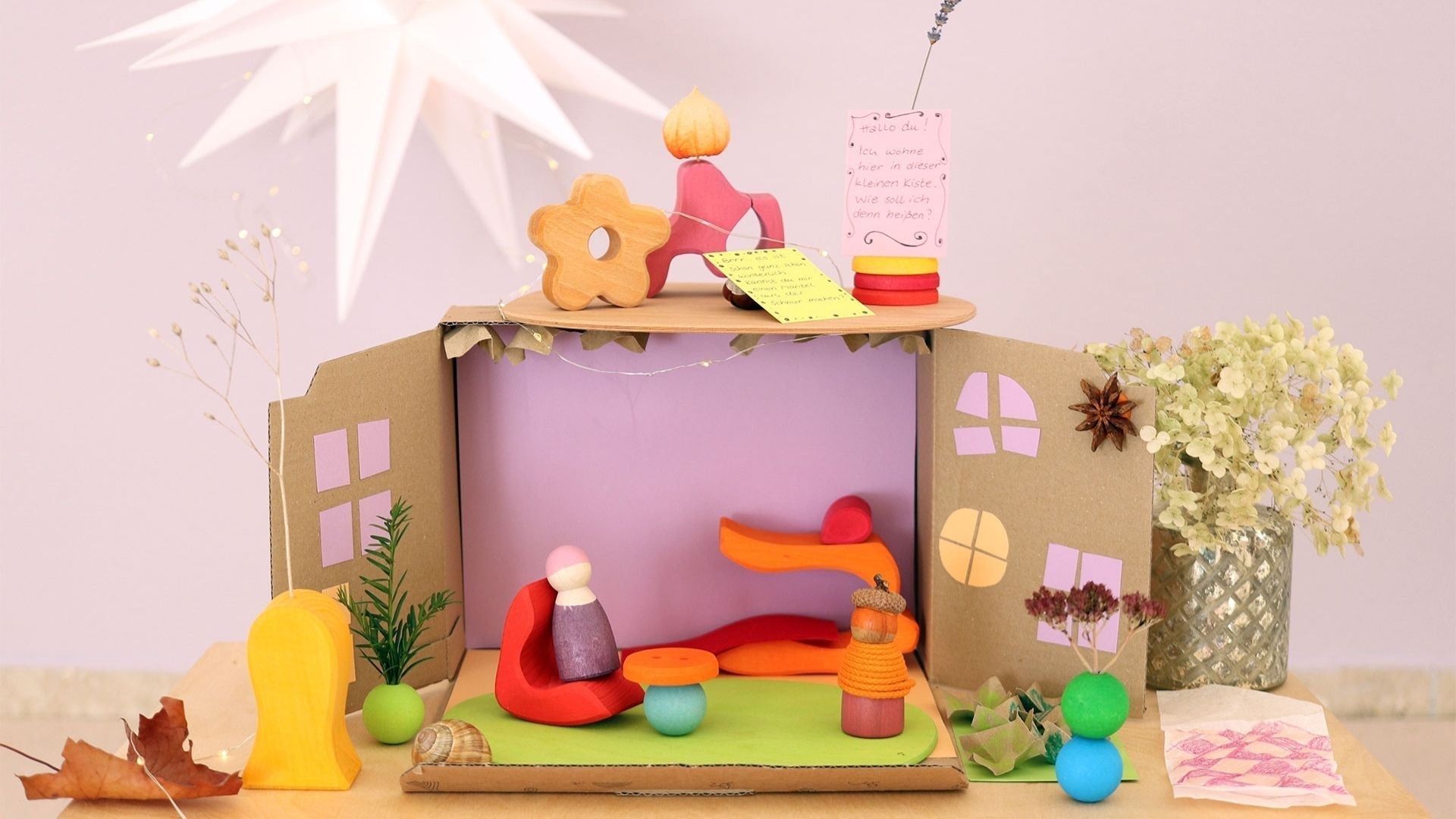A text by Marie (GRIMM'S)
What is open-ended play?
Children play spontaneously and quite naturally. Anywhere and at any time. Open-ended play is precisely the kind of play that works anywhere and at any time, because you essentially don't need anything. Children's imaginations are limitless, and they're capable of transforming anything. The child creates the game themselves, deciding on the theme, materials, course, possible playmates, location, and duration. All of this emerges from the situation. This is also referred to as open-ended or free play: playing without guidelines, without a goal, without an end.
Children don't just play games - they are in their game
Of course, free doesn't mean without limits, but rather self-determination within a certain framework. Free play is a highly creative activity, and it often reflects the world in which children live—in doing so, they make it tangible for themselves.

Children play from the moment they wake up until they go to bed, or rather, they do everything playfully: They don't run; they trot like wild horses, they balance over lava-filled chasms, and they wade through dangerous swamps. It's their world, because here they have a degree of control that they don't yet have in most other areas of their lives. Children don't just play their games; they are in their games.
What are the benefits of open-ended play?
Open-ended play is one of the three cornerstones of Montessori education and is essential for child development, as it is through it that children acquire lasting, valuable skills for life. Of course, children don't play with the goal of learning something; they love it because they are curious and enthusiastic about many things. The experiences they gain in this way, at their own pace, cannot be conveyed in any other way, because playful learning is incredibly effective.
Children need space for their own creative ideas and autonomous solutions to develop a healthy awareness of themselves, their own bodies, their potential, their effectiveness, and social and emotional intelligence. Recognizing, understanding, and regulating their own needs and feelings are also important steps in personality development and essential for sociocultural coexistence. What's especially nice is that in free play, all children speak the same language.

How can I enrich my child's open-ended play? - 5 tips
For us at GRIMM'S, open-ended play has been a matter close to our hearts for over 40 years because we believe it's incredibly important for healthy child development. To share our many years of experience with you, we've compiled five practical tips that will help you easily create the ideal conditions for free play:
#1 Space and time
Your child needs a safe space and regular time to play freely and develop. Don't cram too many pre-planned activities into your child's schedule; instead, deliberately leave gaps that can be freely planned, for example, at home or outside in the garden. To ensure everyday usability, it's a good idea to agree on a rough time frame beforehand, for example, until dinner, which shouldn't be interrupted by other appointments.
Nature is a wonderful playground
In addition to your own surroundings at home, it's also particularly good to simply go out into the woods, onto a meadow, or by a stream and see what happens there, without any plans. Nature is a wonderful playground, and it really doesn't take much for your child to start playing and quickly immerse themselves in a fantastic world. This also brings a sense of relaxation to your everyday life, and you all benefit when you finally return home with rosy cheeks and full of renewed energy.

#2 Trust and security
Trust your child and just let them do it. This lays a very important foundation for your relationship. You may have to hold back the occasional no and accept the risk of getting your pants dirty. But do you remember how you loved experimenting with watercolors as a child, testing the depth of every puddle, and collecting rocks and proudly bringing them home? It's always worth it.
“I’m booooored”
Boredom is not a sign of a lack of creativity and is okay to tolerate. Often, it creates the space for creative ideas and their implementation. So you don't have to make up game ideas out of thin air when your child comes around with "I'm boooooored." On the contrary, just let them go and show understanding. It won't be long before your child has immersed themselves in playing again. The decision about active and quiet play phases is also up to the child to make based on their own feelings, and both are perfectly fine - an important life lesson for recognizing their own needs.

#3 Alone and together
Open-ended play works in all conceivable situations, but it should be self-chosen. Alone, with other children, or with parents. The important thing for adults is to remain authentic and engaged while playing. So, don't pretend to be the entertainers, but act as equal playmates on equal terms.
Sometimes, however, the presence and proximity of a familiar person is enough to initiate free play, and active participation isn't even necessary. Through careful observation, you can easily recognize your child's individual needs and thus respond to them in the best possible way. And your child also learns to shift perspectives and be empathetic through interaction.
#4 Play material
Provide your child with toys that are suitable for free play. You can recognize them by the fact that they are versatile and open-ended, requiring no explanation or instructions. There's no right or wrong way to use them, which allows for a particularly free and well-stimulated imagination.
For play materials, such as construction sets, where the building blocks are more or less neatly arranged for storage, we always recommend deconstructing them first, or, more colloquially, dumping everything out! This way, the endless possibilities are fully accessible to your child.

Quality instead of quantity
Basically, a few select pieces that are appropriate for your child's developmental stage are sufficient. It's best not to choose too many, but make sure they're of good quality and made from non-toxic materials and colors. Too many toys mean a lot of stimuli, which can quickly become overwhelming and inhibit imagination.
But many everyday objects are also ideal for incorporating into free play. Often, it's a few blankets, pillows, and clothespins that create the most amazing dens, or large boxes that invite hours of painting and playing. Likewise, bowls, pots, funnels, straws, and corks are given new life in a child's hands in no time. Your child will surely find use for old clothes, glasses, shoes, and scarves, slipping into a variety of roles.
#5 Minimalism in the children's room

The nursery should be explorable for your child, but not cluttered: interesting play materials, but not too many stimuli; stimulating activities, but not too much input; aesthetically pleasing design, but not too much decoration.
Less is more
In a child's room, the motto is: less is more. It's a good idea to first look at the room from your child's perspective. So, get down to eye level and let it sink in. This way, you can also test and observe the places where your child spends time.
Allow your child to reach all of their play materials independently and without help, as this will give them self-determination and a certain amount of freedom. It's also worth going through the nursery together from time to time to see what might no longer be age-appropriate or uninteresting.
Cleaning up creates space for new ideas
To prevent tidying up from becoming a daily chore, consider using boxes and baskets dedicated to specific play materials, which can be quickly stowed away. Of course, a child's room doesn't always have to be spotlessly tidy, and assembled play areas can stay upright for a while. But you may have noticed that your child is much more motivated to start playing when the floor isn't cluttered with other things, but rather there are quiet, open spaces that offer room for new play ideas.

When it comes to materials and colors, we always recommend choosing natural materials. High-quality materials are not only more attractive and feel better, but are also generally more durable and therefore more sustainable. For especially young children, we also tend to recommend calm colors, such as warm whites, earth tones, and natural wood, to minimize stimuli.
Later, of course, favorite colors can also be introduced and your child's individual needs and interests can serve as a guide for the room design.
Simple but valuable
Free play is essentially the most natural thing in the world for children, and enriching it is no rocket science for parents. Quite the opposite; it's actually quite simple yet so valuable. As an adult, all you need to do is provide your child with a sense of security and create a safe environment for them that allows them to be active and develop through play. And off you go!
We hope we have been able to give you some practical tips to help you integrate free play into your and your children's everyday lives.
Please let us know if these tips are helpful to you and if you've already implemented any of them at home? We're curious!



